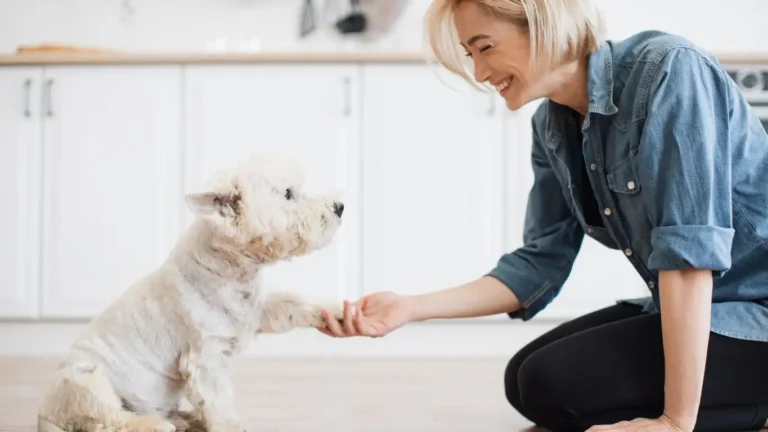Help Your Dog Stay Calm Around Power Tools with Simple Training
Many dog owners find themselves facing a common problem: their dog is terrified of power tools. Whether it’s a drill, a saw, or even a vacuum cleaner, the loud noise and vibrations can send a dog running or barking uncontrollably. This can be stressful for both the pet and the owner—especially if you’re trying to do repairs, renovations, or even hobby work at home.
Training your dog to be okay with power tools is not only possible, but it can also greatly improve their quality of life. With the right approach, patience, and a bit of know-how, you can help your furry friend feel calmer and safer around loud sounds. This article will explain how power tool noise affects dogs, how desensitization works, and practical steps you can take at home.
Understanding Why Dogs React to Power Tools
Dogs have much better hearing than humans. In fact, they can hear sounds up to four times farther away than we can and at much higher frequencies. This means that the high-pitched whine of a drill or the sudden buzz of a sander is much louder and more intense to them.
In addition to their sensitive ears, dogs rely heavily on routine and their sense of safety. Loud, unpredictable noises can feel threatening, especially if they don’t understand the source. For many dogs, power tools trigger a natural “fight or flight” stress response.
Some signs your dog may be afraid of power tools include:
- Trembling or shaking
- Barking or growling
- Hiding under furniture
- Pacing or restlessness
- Trying to escape the room or house
This kind of fear can be very real for a dog. Helping them feel more comfortable is an important step in building their confidence and reducing stress.
How Noise Desensitization Works
Desensitization is a training technique that helps a dog get used to something that scares them. It involves slowly exposing them to the trigger—in this case, power tools—at a low level and rewarding calm behavior. Over time, your dog learns that the sound isn’t dangerous.
This process is often paired with counterconditioning. That means teaching your dog to associate the scary noise with something they love, like treats or toys. The goal is to help your dog form a new, positive connection with the noise.
These methods are commonly used by certified dog trainers and animal behaviorists, and they are supported by scientific research and veterinary professionals. They work best when done gradually and with consistency.
Common Reasons Dogs Are Sensitive to Power Tools
There are several reasons a dog might react strongly to power tools:
- Past trauma: A dog that had a bad experience with loud noise may develop a lasting fear.
- Lack of socialization: Dogs that haven’t been exposed to different sounds during puppyhood may struggle later.
- Breed traits: Some breeds are naturally more sensitive or alert to sound, such as herding or guarding breeds.
- Health issues: Hearing problems, pain, or neurological issues can make certain noises feel more intense.
- General anxiety: Dogs that are anxious in general may be more likely to fear power tools.
Every dog is different. Understanding what’s causing your dog’s reaction is a good first step toward helping them feel better.
Steps to Train Your Dog to Be Okay with Power Tools
It’s important to go slow and follow your dog’s pace. Training should always be positive and never forced. Here are some effective steps to follow:
1. Start With Recordings
Use your phone or computer to play the sound of the power tool at a very low volume. Give your dog treats or play with them while the sound is on. Keep sessions short (2–5 minutes) and stop if your dog shows signs of stress.
2. Gradually Increase Volume
Over a few days or weeks, slowly raise the volume as your dog gets used to it. Always pair the sound with something fun. If your dog seems scared, go back to the previous level and try again later.
3. Introduce the Tool Itself (While Off)
Let your dog sniff and explore the tool while it’s turned off. Reward calm behavior with praise or treats. This helps them become familiar with the object visually and through scent.
4. Turn It On From a Distance
With your dog on a leash or in another room, turn on the power tool briefly. Keep sessions short and positive. Distance helps reduce the intensity of the noise at first.
5. Work Up to Normal Use
As your dog becomes more relaxed, you can gradually reduce the distance and increase the duration. Always reward calm behavior. Take breaks if needed and avoid rushing the process.
6. Use Calming Tools
Consider using calming aids like:
- Adaptil collars or diffusers (synthetic calming pheromones)
- White noise machines
- Soft compression garments (like Thundershirts)
- Natural calming treats (check with your vet first)
These tools can support your training and help your dog feel more secure during practice sessions.
When to Seek Help from a Professional
If your dog shows severe fear, aggression, or doesn’t improve after a few weeks of training, it might be time to get help from an expert. Certified dog trainers, especially those with experience in fear-based behavior, can create a customized plan for your dog. Veterinary behaviorists can also assess for anxiety disorders and may suggest medication if needed.
Talk to your vet if you notice:
- Your dog injures themselves trying to escape
- They stop eating or playing due to stress
- The fear is affecting daily life or other training
Getting professional guidance isn’t a sign of failure—it’s a smart step toward helping your dog feel better and safer.
Helping Your Dog Feel Safe Takes Time
Training your dog to tolerate power tools won’t happen overnight, but with steady effort and lots of encouragement, you can make real progress. Focus on small wins, like your dog staying in the room while the tool is on. Celebrate those steps. The more your dog learns they’re safe, the easier it becomes.
Always use gentle, reward-based methods, and don’t push your dog too fast. Your patience helps build their confidence—and that’s something worth investing in.
If you ever feel unsure, don’t hesitate to ask your vet or a professional trainer for advice. You’re not alone in wanting your home to be a peaceful place for everyone—including your four-legged friend.






